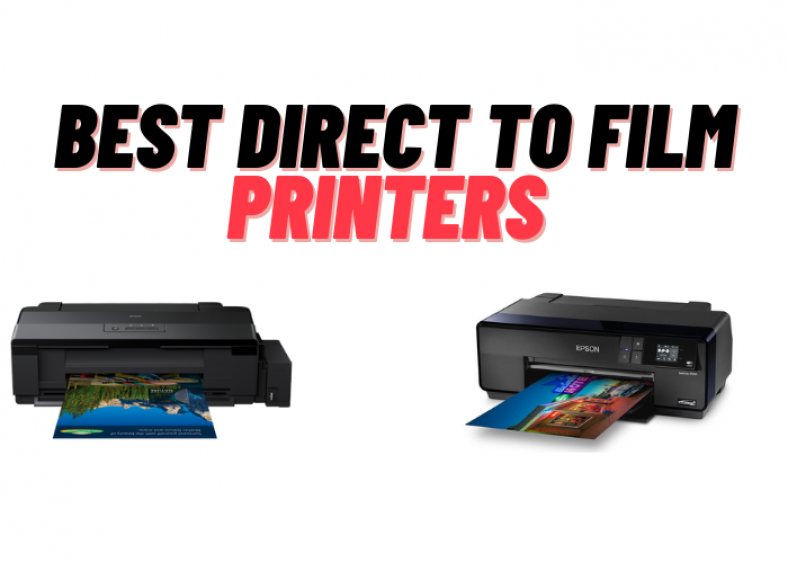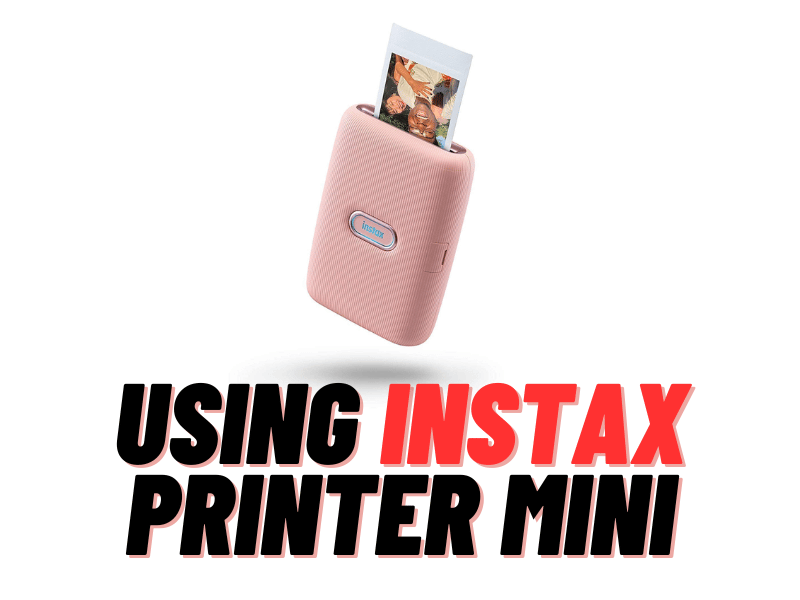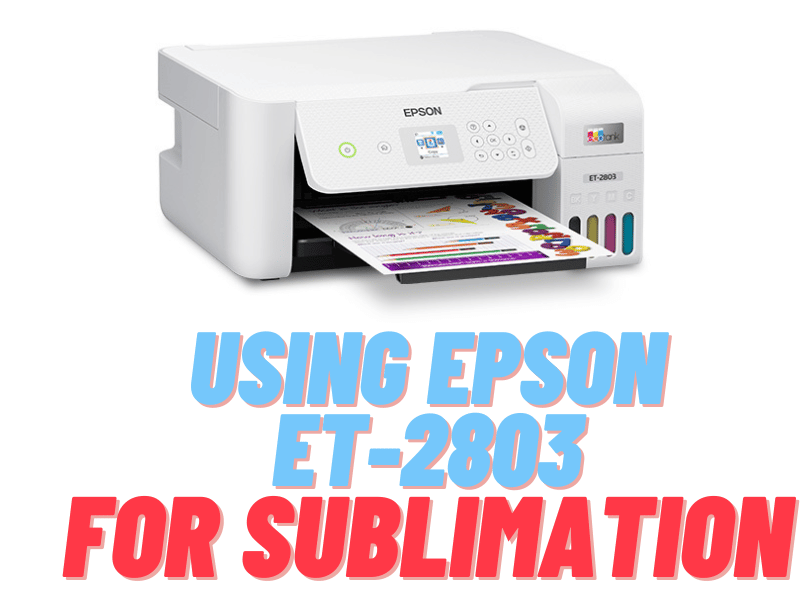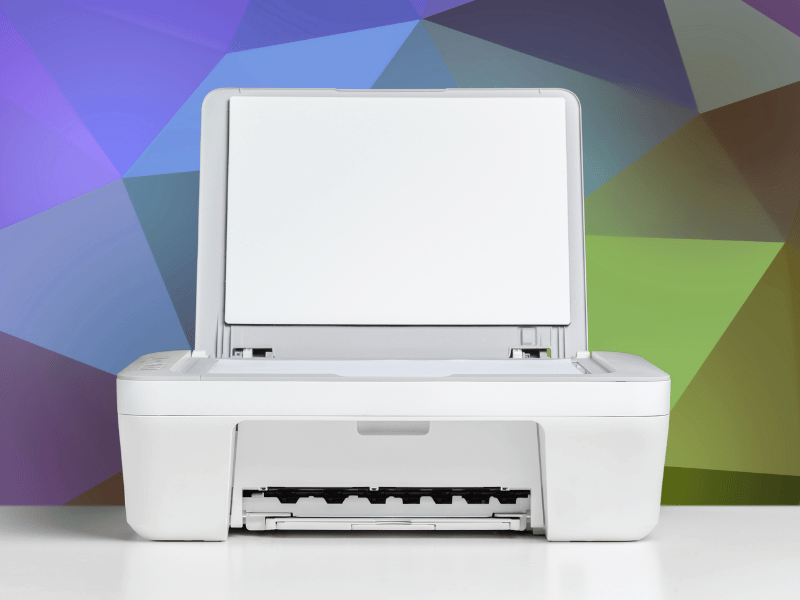Direct To Film (DTF) printing is a dynamic and growing industry that allows individuals and businesses to produce vibrant and detailed designs on a wide range of textiles. Whether you’re a beginner looking to embark on your DTF printing journey or a seasoned professional seeking the best options for 2023, choosing the right DTF printer is a critical decision.
In this guide, we will explore the top 7 best DTF printers tailored for beginners. Each printer offers unique features and advantages, making them ideal for those who are just starting in the world of DTF printing. These printers combine user-friendliness, quality, and affordability, making them the perfect choices for newcomers to the industry.
Let’s delve into the world of DTF printing and discover the key features and benefits of these printers designed to help beginners thrive in this exciting field.
Top 3 Picks:
1. Epson SureColor P800:
Epson SureColor P800
The Epson SureColor P800 is a powerhouse in the world of DTF printers. Renowned for its exceptional print quality and user-friendly features, this printer is an excellent choice for beginners venturing into DTF printing in 2023. With a compact and sleek design, it easily fits into a home or small business setting, offering the flexibility to create stunning textile prints.
- Precision Printing: The Epson SureColor P800 boasts a PrecisionCore MicroTFP printhead, delivering sharp and detailed prints with a resolution of up to 2880 x 1440 DPI. Your designs will pop with vivid colors and impressive accuracy.
- Advanced Ink Technology: Equipped with nine UltraChrome HD ink cartridges, this printer offers a wide color gamut, ensuring that your DTF prints are rich and vibrant. You’ll have the flexibility to experiment with a broad spectrum of colors.
- Large Color Touchscreen: The intuitive 2.7-inch color touchscreen interface makes it easy to navigate settings, monitor ink levels, and manage your printing tasks with ease.
In summary, the Epson SureColor P800 is an outstanding choice for DTF printing beginners. With its top-notch print quality, advanced ink technology, wireless connectivity, and user-friendly touchscreen interface, it combines precision with ease of use. Whether you’re printing personal designs or starting a small DTF printing business, this printer provides the tools you need for success in 2023.
2. Epson SureColor P400:
EPSON SureColor P400
The Epson SureColor P400 is a compact DTF printer that offers affordability and quality, making it an excellent choice for beginners and small-scale DTF printing projects.
- High-Resolution Prints: Despite its compact size, the SureColor P400 doesn’t compromise on print quality. It delivers sharp and detailed prints with a maximum resolution of 5760 x 1440 DPI, ensuring your designs stand out.
- Advanced Ink Technology: Equipped with UltraChrome HG2 ink, this printer produces rich, vibrant colors and smooth gradients. Your DTF prints will be visually appealing and durable.
- Compact Design: The small footprint of the P400 makes it a great fit for home studios and small businesses with limited space. It’s easy to integrate into your workspace.
The Epson SureColor P400 is a compact and affordable DTF printer with high-resolution printing capabilities, advanced ink technology, a compact design, and wireless printing support. For beginners and small-scale DTF printing projects in 2023, this printer is a practical choice to create quality textile prints without breaking the bank.
3. Epson Stylus Pro 4900:
 Epson Stylus Pro 4900
Epson Stylus Pro 4900
The Epson Stylus Pro 4900 is a tried-and-true DTF printer known for its reliability and outstanding print quality. While it may not be the latest model, it remains a strong contender for beginners in 2023 who seek a dependable workhorse for their textile printing needs.
- PrecisionPrint Technology: The Stylus Pro 4900 features Epson’s PrecisionPrint technology, delivering highly accurate and sharp prints with a resolution of up to 2880 x 1440 DPI. Whether you’re creating intricate designs or vibrant images, this printer handles it with finesse.
- UltraChrome HDR Ink: Equipped with the UltraChrome HDR ink system, it offers a wide color gamut, producing prints with exceptional color accuracy and detail. You can count on consistent and impressive results.
- Roll Paper Holder: This printer includes a roll paper holder, allowing you to print long banners or continuous fabric designs with ease. It’s a valuable feature for businesses looking to offer various print sizes.
The Epson Stylus Pro 4900 may not be the newest model on the market, but it’s a workhorse for DTF printing. With PrecisionPrint technology, UltraChrome HDR ink, roll paper holder, and advanced media handling, it ensures high-quality and versatile results. For beginners in 2023 looking for a reliable option that’s stood the test of time, the Stylus Pro 4900 is a solid choice.
4. Epson Expression Photo HD XP-15000:
Epson XP-15000
The Epson Expression Photo HD XP-15000 is a high-quality photo printer that is well-suited for DTF (Direct-To-Film) printing. It features a high-resolution print head that can produce prints up to 5760 x 1440 dpi, making it ideal for printing high-quality transfers that can be applied to a variety of materials, including textiles, garments, and hard surfaces.
- High-Resolution Printing: The XP-15000 offers exceptional print quality with a maximum resolution of 5760 x 1440 DPI. Your DTF prints will exhibit vivid colors and sharp details, making your designs stand out.
- Six-Color Claria Photo HD Ink: Equipped with Claria Photo HD ink, this printer delivers a wide color gamut, resulting in prints with rich and accurate color reproduction. Whether you’re printing photographs or intricate designs, this ink system ensures professional-quality results.
- Wireless Printing: With built-in Wi-Fi, the XP-15000 supports wireless printing from your computer, smartphone, or tablet. This convenient feature simplifies the printing process and offers flexibility in your workspace.
- Wide Format Printing: The printer’s ability to handle paper sizes up to 13×19 inches (A3+) allows you to create larger designs and prints. It’s a valuable feature for those who want to experiment with different print sizes.
The Epson Expression Photo HD XP-15000 is a great choice for DTF printing. It offers a high-resolution print head, a wide color gamut, individual ink tanks, and a variety of media support. If you are looking for a high-quality DTF printer, the XP-15000 is a great option to consider.
5. Epson L1800 DTF Printer:
The Epson L1800 DTF Printer is a cost-effective and reliable choice for beginners entering the world of DTF printing. This printer is designed for affordability without compromising on print quality.
Features:
- High-Resolution Printing: The L1800 offers impressive print quality with a maximum resolution of 5760 x 1440 DPI. This ensures that your DTF prints are sharp, vibrant, and full of detail, making them visually appealing.
- Six-Color Ink Tank System: Equipped with Epson’s six-color ink tank system, this printer provides a wide color gamut, producing prints with excellent color accuracy and saturation. It’s an economical ink solution for high-quality results.
- Versatile Media Handling: The printer accommodates various media types and sizes, making it versatile for different DTF printing projects. Whether you’re working with fabric, paper, or other substrates, this printer is adaptable.
- User-Friendly Design: The L1800 is user-friendly with easy setup and operation. It’s a great choice for beginners who are new to DTF printing and want a straightforward printing experience.
The Epson L1800 DTF Printer is a cost-effective and beginner-friendly option with high-resolution printing, a six-color ink tank system, versatile media handling, and user-friendly design. If you’re new to DTF printing and want an affordable printer that still delivers quality textile prints, the L1800 is a solid choice.
6. Epson Artisan 1430:
Epson Artisan 1430
The Epson Artisan 1430 is a 6-color wide format inkjet printer that is well-suited for DTF (Direct-To-Film) printing. It features a high-resolution print head that can produce prints up to 5760 x 1440 dpi, making it ideal for printing high-quality transfers that can be applied to a variety of materials, including textiles, garments, and hard surfaces.
- A wide color gamut: The Artisan 1430 uses 6 individual ink colors to produce a wide range of colors, including vibrant neons and metallics. This makes it ideal for printing high-quality DTF transfers that will stand out.
- Individual ink tanks: The Artisan 1430 uses individual ink tanks, which makes it easy to replace individual colors as needed. This can save you money on ink costs, especially if you are printing a lot of DTF transfers.
- A variety of media support: The Artisan 1430 can print on a variety of media types, including DTF transfer paper, heat transfer vinyl, and sublimation paper. This gives you the flexibility to print a variety of different types of DTF transfers.
The Epson Artisan 1430 is a great choice for DTF printing. It offers a high-resolution print head, a wide color gamut, individual ink tanks, and a variety of media support. If you are looking for a high-quality DTF printer, the Artisan 1430 is a great option to consider.
7. Epson Eco Tank PhotoET-8550:
Epson Eco Tank ET-8550
The Epson EcoTank ET-8550 is a wide-format inkjet printer that is well-suited for DTF (Direct-To-Film) printing. It features a high-resolution print head that can produce prints up to 5760 x 1440 dpi, making it ideal for printing high-quality transfers that can be applied to a variety of materials, including textiles, garments, and hard surfaces.
- A wide color gamut: The ET-8550 uses 6 individual ink colors to produce a wide range of colors, including vibrant neons and metallics. This makes it ideal for printing high-quality DTF transfers that will stand out.
- Supertank ink system: The ET-8550 uses a supertank ink system, which means that you can save up to 90% on ink costs compared to traditional cartridge printers. This is especially important for DTF printing, as you can use a lot of ink.
- A variety of media support: The ET-8550 can print on a variety of media types, including DTF transfer paper, heat transfer vinyl, and sublimation paper. This gives you the flexibility to print a variety of different types of DTF transfers.
The Epson EcoTank ET-8550 is a great choice for DTF printing. It offers a high-resolution print head, a wide color gamut, a supertank ink system, and a variety of media support. If you are looking for a high-quality and economical DTF printer, the ET-8550 is a great option to consider.
Direct To Film Printers Buyers Guide:
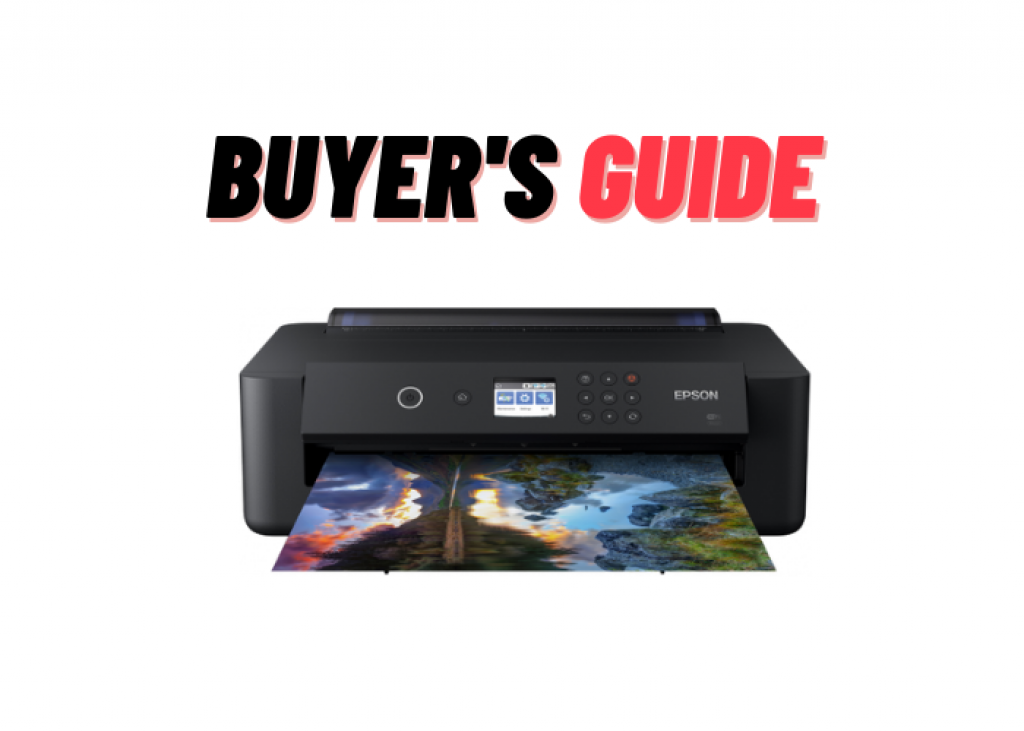
When it comes to purchasing a Direct To Film (DTF) printer, there are several key factors to consider. As a beginner or someone looking to invest in a DTF printer for your business, this buyer’s guide will help you make an informed decision.
1. Print Resolution and Quality:
- High-resolution printing is crucial for producing sharp and detailed DTF prints. Look for a printer with a high DPI (dots per inch) rating for optimal quality.
2. Ink Technology:
- The type of ink used in the printer significantly affects the quality and durability of your prints. Pigment-based or water-based inks are common for DTF printing. Ensure the ink system provides vibrant colors and good color fastness.
3. Print Size and Area:
- Consider the maximum print size and the available print area. Some DTF printers can accommodate larger designs or multiple prints in a single run, offering versatility for your projects.
4. Ease of Use:
- A user-friendly interface and software are essential, especially for beginners. Look for printers with intuitive controls and straightforward setup procedures.
5. Media Compatibility:
- Check the printer’s compatibility with various types of textiles and substrates. Versatility in media handling is essential for expanding your product offerings.
6. Printing Speed:
- Printing speed is a critical factor, especially for businesses with high production demands. Balancing speed with print quality is key.
7. Connectivity:
- Consider whether the printer supports wireless or wired connections. Wireless printing can enhance your workflow and flexibility.
8. Cost of Consumables:
- Analyze the ongoing costs, including ink and other consumables. Some printers offer cost-effective solutions, while others may have higher consumable costs.
9. Durability and Reliability:
- Reliability is essential for minimizing downtime. Research the printer’s durability and its ability to withstand continuous printing.
10. Brand and Support:
- Choose well-established brands with a reputation for providing good customer support, including technical assistance and spare parts availability.
11. Environmental Considerations:
- If sustainability is a priority, look for printers that use eco-friendly inks and efficient power consumption.
12. Price and Budget:
- Set a budget and look for printers that meet your requirements within that budget. DTF printers come in various price ranges, so consider your financial constraints.
13. Reviews and Recommendations:
- Read customer reviews and seek recommendations from other DTF printers users to gain insights into their experiences with specific models.
14. Warranty and Service:
- Ensure the printer comes with a warranty and understand the terms and coverage. Also, inquire about service and support options.
15. Future Expansion:
- Think about your long-term goals. If you plan to expand your printing business, choose a printer that can accommodate your growth.
In conclusion, selecting the right DTF printer involves considering factors such as print quality, ink technology, ease of use, media compatibility, and budget. Research thoroughly, read reviews, and compare different models to find the DTF printer that best suits your needs and ensures your success in DTF printing in 2023 and beyond.
Converting an Epson Printer to DTF:
Converting an Epson printer into a Direct To Film (DTF) printer is a complex and potentially risky process. It’s essential to note that not all Epson printers are suitable for this conversion, and doing so may void your printer’s warranty. Additionally, DTF printing requires specialized inks and software that are not included with standard Epson printers. Here’s a general overview of the steps involved in converting an Epson printer to DTF:
1. Selecting the Appropriate Epson Printer:
- Choose an Epson printer model that is compatible with DTF conversion. Not all Epson printers can be converted, and the suitability of a specific model depends on various factors, including the availability of third-party DTF conversion kits and software.
2. Acquire a DTF Conversion Kit:
- You’ll need a DTF conversion kit, which typically includes a modified printhead, ink lines, a bulk ink system, and other components that enable the printer to handle DTF ink and films. These kits are usually sold by third-party manufacturers who specialize in DTF conversions.
3. Modify the Printer:
- Carefully follow the manufacturer’s instructions to modify the Epson printer with the components from the DTF conversion kit. This process may involve disassembling parts of the printer and installing new components.
4. Install DTF Inks:
- Replace the standard ink cartridges with DTF ink cartridges. DTF ink is specially formulated for textile printing and has different properties compared to standard inkjet inks.
5. Configure and Calibrate:
- Adjust printer settings to work with DTF inks and films. This may include setting the correct print resolution, color profiles, and ink density.
6. Install DTF Software:
- You’ll need DTF printing software that is compatible with the modified Epson printer. This software is designed to handle DTF-specific printing tasks.
7. Test and Calibration:
- Conduct test prints and calibration to ensure that the converted printer produces accurate and high-quality DTF prints.
8. Maintain and Troubleshoot:
- Proper maintenance is crucial to keep your DTF printer in good working condition. Regularly clean the printhead, perform ink system maintenance, and address any issues that may arise.
It’s important to note that converting an Epson printer to DTF requires technical expertise and a good understanding of printer mechanics and electronics. If you’re not experienced in printer modification, it’s advisable to seek professional assistance to avoid damaging your printer or voiding its warranty.
Furthermore, some DTF conversion kits and modifications may not be legal or compliant with Epson’s terms of use. Always check the legality and warranty implications before proceeding with a conversion.
In many cases, purchasing a dedicated DTF printer that is designed and manufactured for textile printing is a more practical and reliable solution for DTF printing. These printers come with the necessary features and support for DTF applications without the risks associated with modifying an existing printer.
Conclusion:
In conclusion, the above-discussed printers are the best for beginners. However, you will notice each printer has its advantages and disadvantages. So, it is best to select a printer that best serves your needs according to the type of work and volume. Feel free to use this article as a guide to help you choose the printer that best addresses your needs.

